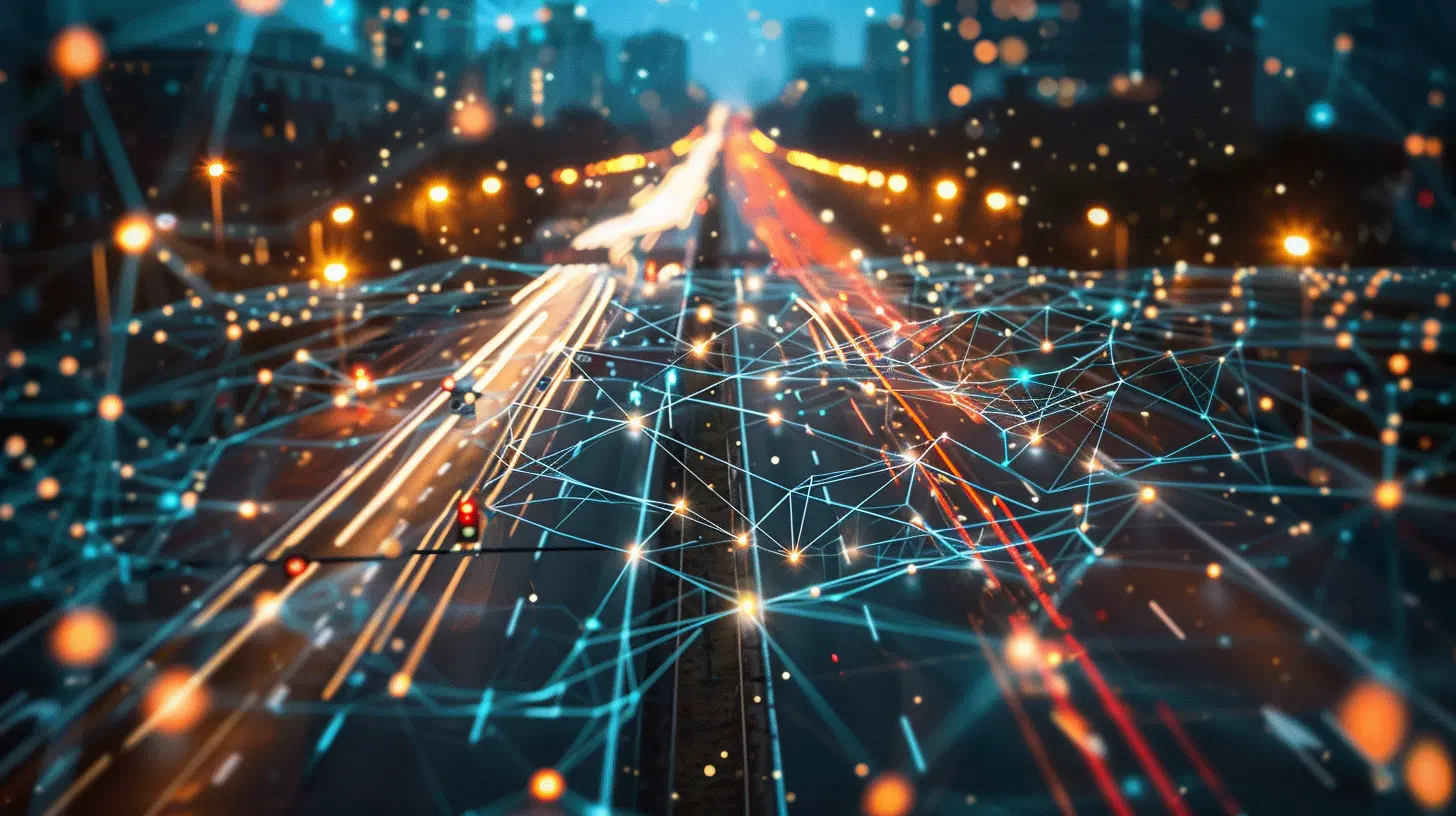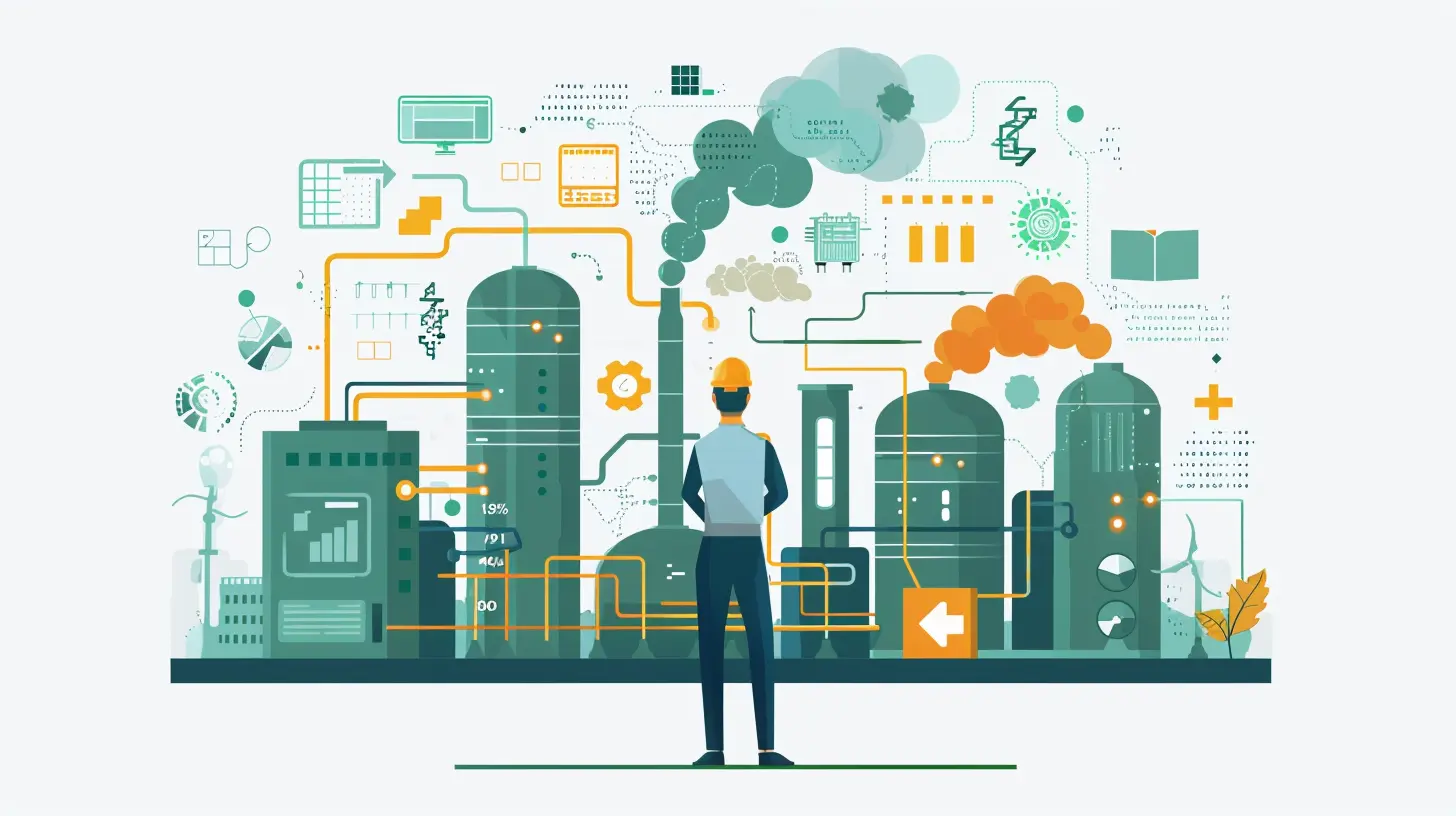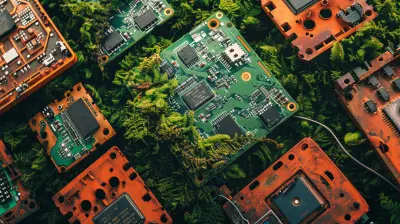How Big Data is Helping Optimize Renewable Energy Systems
3 July 2025
The world is shifting towards renewable energy at an unprecedented pace. But with great power (literally) comes great responsibility. Renewable energy sources like wind, solar, and hydro aren't as predictable as fossil fuels. So, how do we make sure they work efficiently? Enter Big Data—the secret sauce behind optimizing renewable energy systems.
Big Data isn't just a buzzword; it's revolutionizing how we generate, store, and distribute energy. From predicting weather patterns to improving grid stability, Big Data is making renewable energy smarter and more reliable. Let’s dive into how it’s all happening! 
The Growing Need for Renewable Energy Optimization
We all know that renewable energy is the future. It's cleaner, more sustainable, and can help combat climate change. But there's one catch—it's not always consistent.Think about solar power. It works perfectly on a sunny day, but what happens when it's cloudy? Wind energy? Great when it's breezy, but useless on a still day. This intermittency is a major hurdle.
That’s where Big Data comes into play. By collecting and analyzing massive amounts of information, energy providers can predict, adapt, and optimize their systems more efficiently than ever before. 
What is Big Data, and Why Does It Matter?
Before we jump into the nitty-gritty, let's clear up what Big Data actually is. In simple terms, it refers to large sets of data that are analyzed to extract valuable insights.The three main characteristics of Big Data are:
- Volume – We're talking about huge amounts of data, generated every second from sensors, smart meters, weather forecasts, and more.
- Velocity – This data is created at an incredibly fast rate, requiring real-time processing.
- Variety – It comes in different forms, including structured (numbers, logs) and unstructured (images, videos, social media posts).
When applied to renewable energy systems, Big Data helps operators make better, data-driven decisions to improve efficiency and reliability. 
How Big Data is Revolutionizing Renewable Energy
So, how exactly is Big Data optimizing renewable energy systems? Let’s break it down.1. Predicting Energy Production More Accurately
One of the biggest challenges in renewable energy is forecasting power generation. Since solar and wind power depend on the weather, fluctuations can make energy supply unpredictable.By leveraging advanced analytics and AI, Big Data helps energy companies:
- Analyze historical weather data to predict solar and wind efficiency.
- Use satellite imaging and IoT sensors to track real-time conditions.
- Improve forecasting models to balance energy supply and demand.
For example, if a wind farm operator sees that wind speeds will drop next week, they can adjust energy distribution accordingly, preventing outages or shortages.
2. Enhancing Grid Stability and Smart Distribution
Imagine a city's power grid as a complex web of wires and connections. If too much energy flows at once, it can overload and cause blackouts. If there’s too little, there’s a power shortage.Big Data enables real-time monitoring of the power grid, ensuring that electricity is distributed efficiently. With smart grids, utilities can:
- Detect energy fluctuations and redirect power where it's needed.
- Predict potential failures before they happen, reducing downtime.
- Automate responses to sudden surges in demand.
This ensures a more stable and resilient power infrastructure, making outages less frequent and keeping the lights on!
3. Optimizing Energy Storage
One of the biggest game-changers in renewable energy is battery storage. But managing batteries efficiently isn’t as simple as plugging in and charging.Big Data helps optimize energy storage by:
- Analyzing charge and discharge cycles to extend battery life.
- Predicting peak demand times to allocate stored energy efficiently.
- Detecting battery issues early to prevent failures.
For example, if solar panels produce excess energy during the day, data analytics can direct that power into storage, ensuring it's available when the sun goes down.
4. Improving Energy Efficiency in Smart Homes and Cities
Have you ever wondered why your electricity bill fluctuates? Big Data is helping homeowners and businesses use energy more efficiently, cutting down waste and saving money.Smart meters and IoT-connected devices collect data to:
- Monitor energy consumption in real time.
- Suggest ways to reduce waste.
- Automatically adjust usage based on peak and off-peak hours.
For cities, this means intelligent street lighting, optimized HVAC systems, and energy-efficient traffic signals, leading to massive energy savings.
5. Facilitating Better Decision-Making for Governments and Companies
Governments and corporations heavily rely on data for decision-making. With Big Data, policymakers can:- Design better energy policies based on real-time energy consumption trends.
- Invest in the right renewable projects based on demand and feasibility.
- Optimize subsidies and incentives to promote green energy adoption.
For renewable energy companies, data helps determine where to build new power plants, how to price electricity, and how to adapt to regulations efficiently. 
Challenges of Implementing Big Data in Renewable Energy
Of course, it’s not all sunshine and rainbows. While Big Data has enormous potential, integrating it into the energy sector comes with challenges:1. Data Security & Privacy Issues
With so much data being collected, there’s always the risk of cyberattacks and breaches. Protecting sensitive energy data is a top priority for governments and utilities.2. High Costs of Infrastructure
Deploying a Big Data-driven system requires massive investments in hardware, software, and skilled personnel. Not every country or company can afford it.3. Integration with Existing Systems
Most power grids were built before the digital age. Upgrading them to handle Big Data smoothly is a complex and costly process.Despite these challenges, the benefits far outweigh the drawbacks, making Big Data an essential tool for the future of renewable energy.
The Future of Big Data in Renewable Energy
The journey has only just begun. As technology continues to evolve, Big Data will play an even bigger role in shaping the energy landscape.Here’s what we can expect in the near future:
- AI-Powered Energy Systems – Self-learning grids that adjust energy distribution in real time.
- Blockchain for Energy Trading – Secure, transparent decentralized energy transactions.
- Advanced Machine Learning Forecasting – Even more precise energy and weather predictions.
The possibilities are endless. By combining renewable energy with cutting-edge analytics, we’re heading towards a greener, smarter, and more sustainable world.
Final Thoughts
Big Data is changing the game for renewable energy. From better forecasting to smarter grids and enhanced storage, it’s making the future of clean energy more efficient, reliable, and scalable.Sure, challenges remain, but with the rapid advancements in AI, IoT, and analytics, the future looks brighter than ever. So next time you flip that light switch or charge your phone, remember—Big Data is working behind the scenes, making it all possible!
all images in this post were generated using AI tools
Category:
Green TechnologyAuthor:

Pierre McCord
Discussion
rate this article
2 comments
Paige McMaster
Fascinating insights! It's intriguing to see how big data can enhance efficiency in renewable energy—excited to learn more about its potential!
November 2, 2025 at 6:02 PM

Pierre McCord
Thank you for your enthusiasm! Big data indeed holds great promise for optimizing renewable energy systems. Stay tuned for more insights!
Issac McClintock
Great insights! Big data's role in optimizing renewable energy systems is transformative, enhancing efficiency and sustainability. Excited to see future advancements in this field!
July 12, 2025 at 4:23 AM

Pierre McCord
Thank you! I'm glad you found the insights valuable. Exciting advancements lie ahead in the intersection of big data and renewable energy!


